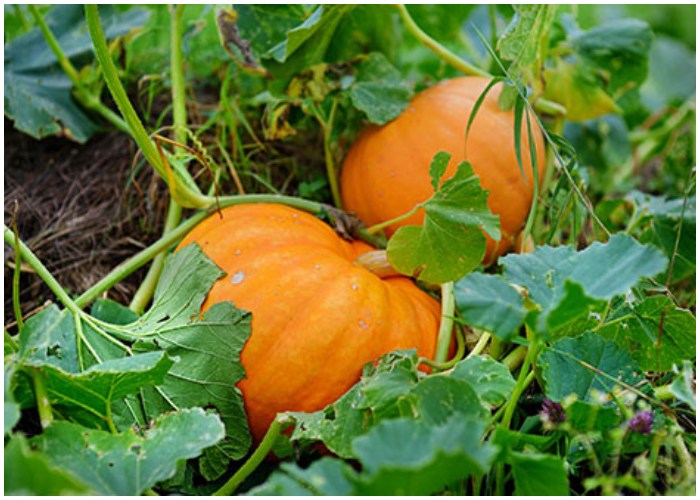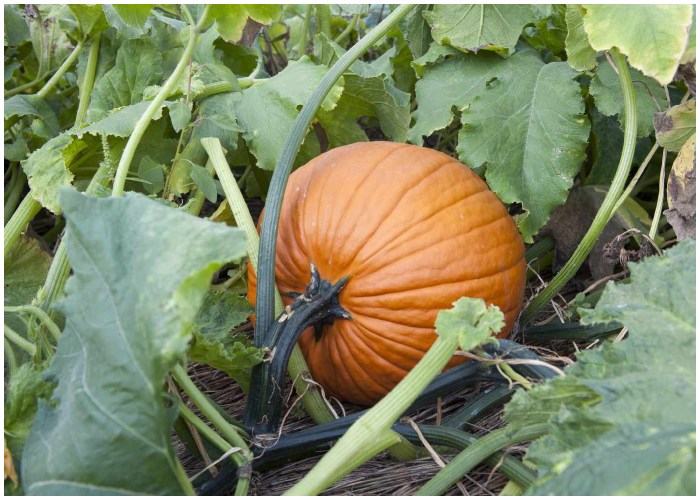Pumpkins are a delight to grow, offering vibrant fruits that can be turned into Halloween decorations or used in a variety of hearty dishes like soups and roasted sides. They thrive with a bit of care, requiring a sunny spot, plenty of water, and protection from the wind to grow to their full potential. In return, by autumn, you’ll have colorful pumpkins that can be stored for use throughout winter.

These versatile vegetables are a type of winter squash, typically producing large, round, orange fruits. While pumpkins are usually grown from seeds indoors during spring, they can also be sown directly outdoors once the soil has warmed up. Whether you’re aiming for Halloween lanterns, tasty pumpkin dishes, or simply enjoying the growing process, here’s everything you need to know to grow pumpkins successfully.
The Perfect Growing Conditions for Pumpkins
Pumpkins love a warm, sunny location with fertile soil and consistent watering. These sprawling plants require a long, hot growing season to reach full maturity, ensuring they store well for winter use. While most pumpkin varieties produce large, sprawling vines, there are more compact options suitable for smaller spaces or containers.
If you want to make the most of your growing area, choosing the right variety is key. Whether you’re growing for food, decoration, or competition, there’s a pumpkin variety that will suit your needs. Some are perfect for carving into Halloween decorations, while others are ideal for cooking or entering into garden shows.
Preparing Your Soil and Sowing the Seeds
Pumpkins can be grown from seed either indoors in mid-spring or outdoors once the frost has passed. Indoor sowing is ideal for giving plants a head start, especially in colder regions, allowing for a longer growing season. To get your pumpkin plants off to a great start, prepare your soil well ahead of time.
- Preparing the Ground: Dig a hole about 30cm wide and deep, and fill it with a mix of soil and well-rotted compost or manure. This will provide your plants with the nutrients they need to thrive. Be sure to add a general-purpose fertilizer as well.
- Sowing Seeds Indoors: Plant your seeds about 1cm deep into small pots of compost and keep them in a warm, sunny spot. After the last frost, you can plant them outdoors, spacing them at least 90cm apart for bush varieties and 1.5m apart for trailing varieties.
- Sowing Seeds Outdoors: Once the weather has warmed up in late May or early June, you can plant seeds directly into prepared ground. Protect your seeds from slugs and snails, and thin the seedlings as they grow to ensure only the strongest survive.

Nurturing Your Growing Pumpkins
As your pumpkin plants start to grow, they’ll need regular care to ensure a healthy harvest. Pumpkins are heavy feeders and require plenty of water, especially during hot, dry spells. Mulching the soil around the plants can help retain moisture and keep the roots cool.
- Supporting Growth: Some pumpkin varieties can spread out several meters, so make sure they have plenty of room. Trailing plants can be grown on supports or left to sprawl across the ground.
- Protecting Against Pests: Keep an eye out for slugs and snails, particularly in damp conditions, and use protective measures to keep your plants safe.
Harvesting and Storing Pumpkins
Your pumpkins will be ready to harvest in autumn, typically around October. To ensure they store well for winter use, allow the fruits to ripen fully on the plant before picking. Once harvested, cure the pumpkins in the sun for a week or two, which will harden their skin and help them last longer in storage.
Pumpkins can be stored in a cool, dry place for several months, providing you with a versatile ingredient for cooking throughout the winter. Whether you’re making soups, roasting them for a side dish, or simply enjoying the process of growing your own pumpkins, you’ll be rewarded for your efforts.